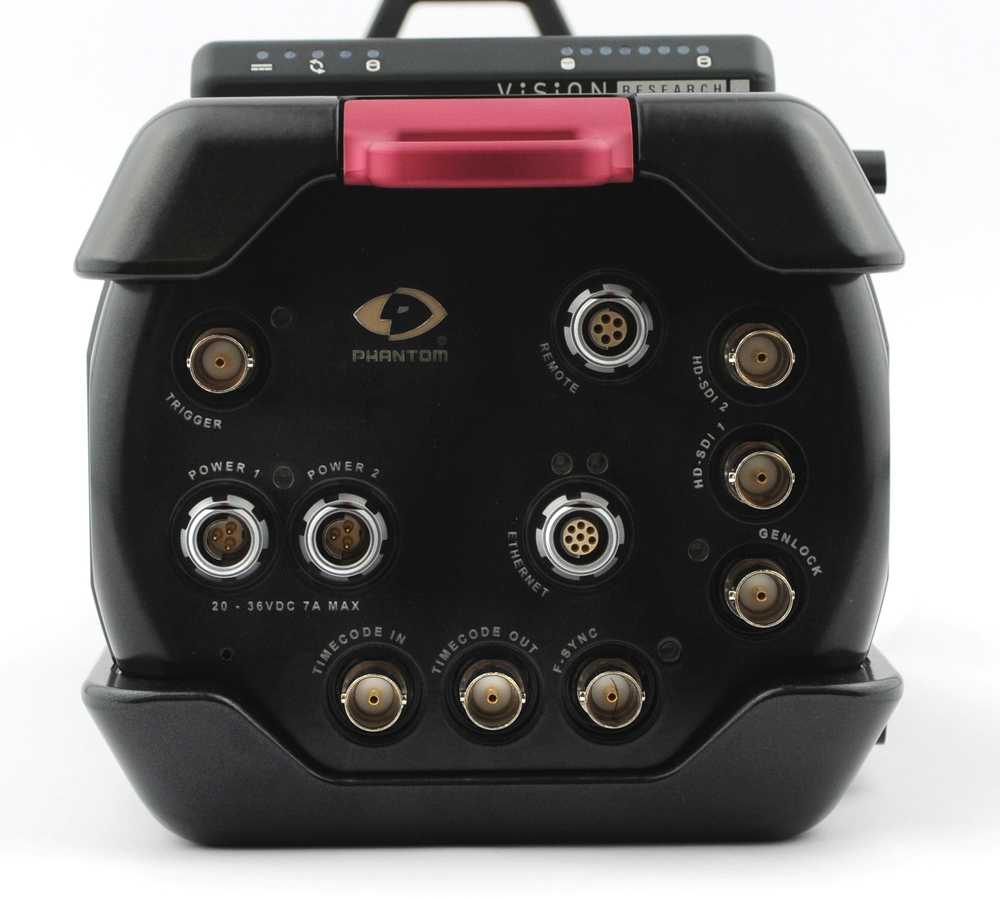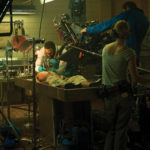
Vision Research’s Phantom Flex Camera
Posted on Apr 15, 2010 by Alex Fice
The New Phantom Flex Vision Research has launched the Phantom Flex which boasts a specially engineered four mega-pixel colour CMOS sensor offering a maximum resolution of 2560×1600. When set to Standard Mode, users get a maximum recording speed of 1,560 frames-per-second (fps) at the camera’s maximum four mega pixel resolution. Higher recording speeds can also be achieved by reducing the camera’s resolution. For example, when used in full-HD resolution (1920×1080), the Phantom Flex offers a maximum recording speed of 2,800 frames-per-second. When reduced to 720p HD resolution (1280×720), the Phantom Flex offers a maximum recording speed of 6,100 fps. The camera can go even faster, recording at 13,000 fps at 640×480. In addition the Phantom Flex can also be used to record at more traditional speeds with frame rates starting as low as 5 fps.
The HQ shooting mode is a high performance setting which yields the ultimate in image quality. A step-up from Standard Mode, Phantom HQ Mode employs Vision Research’s proprietary image enhancement technology. Phantom HQ Mode ensures stable blacks, low noise, higher dynamic range and repeatable shots over the full range of supported resolutions, frame rates, and temperatures, all without the need to conduct pre-shot black references. When set to Phantom HQ Mode, the Flex trades speed for enhanced image quality; however, the camera still offers impressive maximum recording speeds of 780 fps at 2560×1600, 1,390 fps at 1920×1080, and 3,000 fps at 1280×720.
 Additional high performance features include:
Additional high performance features include:
– Breakthrough sensitivity: increased peak quantum efficiency and reduction in noise-equivalent power
– 1000 ISO (measured using ISO 12232 SAT method)
– 12-bit pixel depth
– Flexible lens options: choose between 35mm (PL, Canon EOS, Nikon F, Panavision), Super 16mm, and 2/3” lenses
– Global, electronic shutter down to one-microsecond
– Select raw digital workflow, video workflow, or combine both for maximum control and flexibility
– Internal mechanical shutter for hands-free and remote Current Session Reference
– Dual HD-SDI outputs: 2 x 4:2:2 HD-SDI ports can be configured as dual-link 4:4:4 video
– On-camera controls for mode selection, settings, playback, edit & save
– Frame synchronization to external signals allows multiple cameras to be synchronized, essential for stereo 3D recording
– Two 12V DC auxiliary power outputs for powering external devices
– Remote port for connecting Phantom Remote Control Unit
– 16GB or 32GB of high-performance built-in dynamic RAM
– Phantom CineMag™, CineStation™ and CineStream™ support








